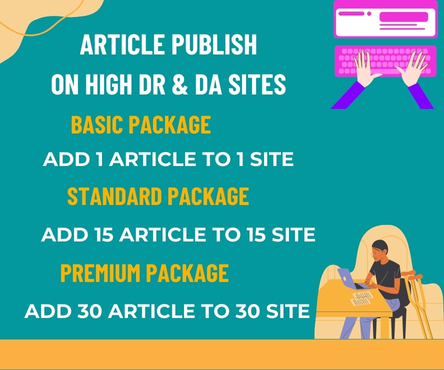In today’s digital era, small businesses face fierce competition not just from local players but also from large global brands accessible online. Amidst this competitive landscape, local SEO marketing emerges as a powerful and often underutilized tool that can dramatically transform the fortunes of small businesses. By optimizing their online presence for local searches, businesses can connect with nearby customers actively looking for their products or services, resulting in increased foot traffic, higher sales, and stronger community relationships.
Understanding Local SEO Marketing
Local SEO (Search Engine Optimization) refers to the process of optimizing a website and online profiles to rank higher in search engine results for geographically related queries. Unlike broader SEO strategies aimed at improving national or international visibility, local SEO targets customers in a specific area. When a user types in search queries like “coffee shops near me” or “plumbers in [city name],” local SEO helps businesses appear prominently in those localized search results, including Google’s Local Pack or map listings.
Why Local SEO Is Crucial for Small Businesses
- Capturing Ready-to-Buy Customers
Local SEO reaches customers who are actively searching for the exact services or products a business offers in their vicinity. These searchers typically have a higher intent to buy compared to general browsers. Appearing at the top of local search results means your business is front and center when potential customers need you the most. - Competing on a Level Playing Field
Small businesses often lack the massive advertising budgets of their larger counterparts. Local SEO, when done correctly, offers a cost-effective way to level the playing field. By focusing on local relevance rather than broad competition, small businesses can secure high rankings in local search results without spending exorbitantly. - Building Local Brand Trust and Credibility
Consistent and accurate business listings, positive customer reviews, and engaging local content foster trust within the local community. When customers see your business prominently displayed with strong reviews and up-to-date information, they are more likely to choose you over unfamiliar competitors.
Key Elements of an Effective Local SEO Strategy
- Google Business Profile Optimization
Claiming and fully optimizing your Google Business Profile (formerly Google My Business) is foundational. This free tool allows your business to appear in Google searches and Maps with essential details such as address, phone number, hours, photos, and customer reviews. Regularly updating this profile ensures accuracy and enhances visibility. - Consistent NAP (Name, Address, Phone Number) Information
Your business name, address, and phone number must be consistent across all online platforms, including your website, social media, directories, and review sites. Inconsistencies confuse search engines and can hurt rankings. - Localized Content Creation
Develop content that resonates with the local audience. This could be blog articles about local events, guides, or success stories involving community members. Such content signals to search engines that your business is active and relevant to the local area. - Earning and Managing Customer Reviews
Positive reviews greatly influence potential customers and improve local ranking positions. Encourage satisfied customers to leave honest feedback and always respond professionally to reviews to demonstrate commitment to customer satisfaction. - Local Citations and Directory Listings
Listing your business on popular local directories, chambers of commerce sites, and industry-specific directories consolidates your online presence. These citations serve as trust signals to search engines, enhancing your site’s authority.
The Impact of Mobile and Voice Search
With the exponential rise of smartphones, mobile search has become the norm, especially for local queries. People often perform “near me” searches on the go, seeking immediate solutions. Optimizing for mobile-friendly websites and voice search further strengthens a small business’s local SEO efforts. Voice searches tend to be more conversational, so incorporating natural language and question-based keywords can capture this growing market segment.
Measuring Success and Continuous Improvement
Implementing local SEO is not a one-time task but an ongoing process. Use tools like Google Analytics and Google Search Console to monitor traffic, user behavior, and keyword rankings. Pay attention to which pages or keywords drive the most local engagement and refine your strategy accordingly. Regular audits of business listings and prompt responses to customer interactions maintain SEO health and local reputation.
Conclusion
Local SEO marketing holds a magical potential for small businesses to thrive in their communities and beyond. By strategically optimizing online presence for local searches, businesses connect directly with nearby customers, boosting visibility, relevance, and revenue without the need for hefty advertising expenditures. Small businesses that embrace the power of local SEO not only increase their market share but also build meaningful relationships that foster long-term growth and success. In the digital age, local SEO isn’t just an option—it’s a necessity for every small business seeking to harness the magic of local connection.
web and marketing web and marketing web and marketing web and marketing web and marketing web and marketing web and marketing web and marketing web and marketing web and marketing web and marketing web and marketing web and marketing web and marketing web and marketing web and marketing web and marketing web and marketing web and marketing web and marketing web and marketing web and marketing web and marketing web and marketing web and marketing web and marketing web and marketing web and marketing web and marketing web and marketing web and marketing web and marketing web and marketing web and marketing web and marketing web and marketing web and marketing web and marketing web and marketing web and marketing web and marketing web and marketing web and marketing web and marketing web and marketing web and marketing web and marketing web and marketing web and marketing web and marketing web and marketing web and marketing web and marketing web and marketing web and marketing web and marketing web and marketing web and marketing web and marketing web and marketing
